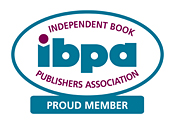When writing my first book, I would hear others say that the second one is harder. I had to toss those words out of my brain because even the first draft of the first book was hard enough. I’ve recently started drafting the second book and I saw that those folks were right. I now have subtext and ‘writing toward a genre’ and dramatic irony and dialogue vs. conversation and word count and plot holes in my head… Oh my! Far more stuff than with the first.
I second-guess every word; third- and fourth-guess every sentence. In truth, I’m getting absolutely nowhere. I’ve already set up my artifacts document and am beating my head against the wall trying to use it for the first draft. WAY too complicated. I’m finally forced to admit that it belongs to the rewrite phase. It’s good that I have it as a guide, but using it to shape the story when it’s far too early is bending me into a pretzel instead.
To get to a first draft I can work with during rewrite, I need an artifact that doesn’t stem my flow of words. I don’t know how first drafts work for you, but I need lots of words – 100K, 200K, 500K, – from which to distill the final story. On the other hand, I can’t ignore what I’ve learned so far. I had thought my hard-won knowledge would make the first draft closer to the final version of the story. What I have found is that I will use it mainly during rewrite.
So how do I guide the story during the first draft? Maybe it’s my new propensity to simplify, but I’ve found the answer is the most basic of artifacts – the comment. Since I write in MS Word, all I have to do is use comments to mark places where I want to explore things further, deepen the story, or question the characters, POV or direction. Duh…
I’m back to just writing – no scene, action, dialogue or even plot checks. Having fun again. 🙂


